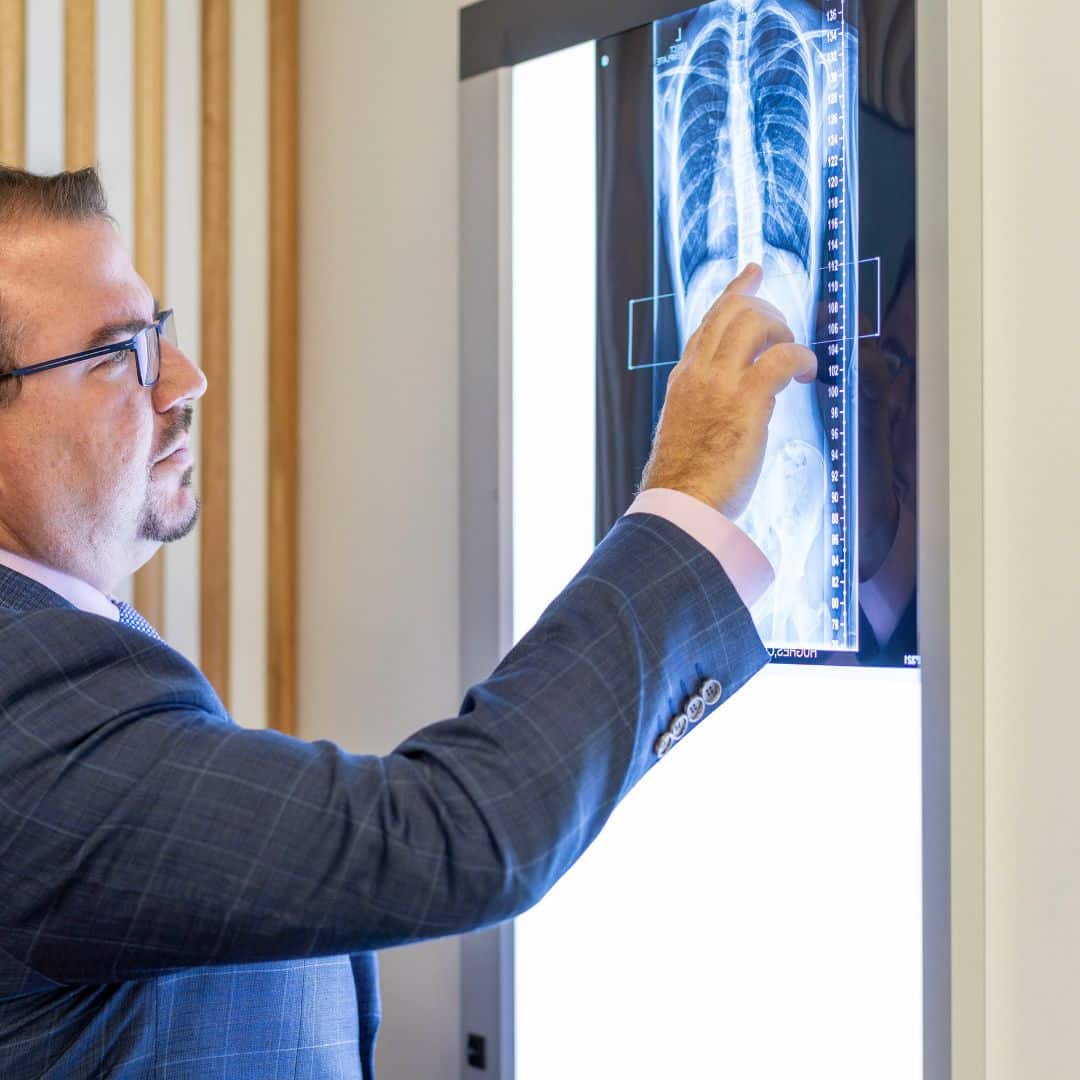As a health professional, when requesting an X-ray to scan for scoliosis, the correct type of X-ray to request is a standing scoliosis X-ray. Typically, only two X-ray images are needed: one from the front (posterior-anterior or PA view) and one from the side (lateral view). It is also important to make sure the pelvis and hips are in the images.

The two X-ray images provide healthcare professionals with crucial information to measure the degree of curvature of the spine. The Cobb angle is the most commonly used method for measuring the degree of curvature, and is calculated by measuring the angle between the top and bottom of the two most tilted vertebrae in the spine for each curve. A Cobb angle of 10 degrees or less is considered within normal range, whereas a Cobb angle of 10-25 degrees is classified as mild scoliosis, 25-40 degrees is moderate scoliosis, and 40 degrees or more is severe scoliosis.
It’s important for healthcare professionals to understand when and how to utilize X-rays in the diagnosis and monitoring of scoliosis. If scoliosis is suspected, an X-ray should be ordered to assess the degree of curvature and to confirm the diagnosis. To confirm the diagnosis of a structural scoliosis there will be a Cobb angle of 10 degrees or more, combined with vertebral rotation. By understanding the use of X-rays in the diagnosis and monitoring of scoliosis, healthcare professionals can provide optimal care for their patients with this condition.
ScoliCare offers a free X-ray and case review service, simply upload your X-ray and case information here: www.scolicare.com/professionals-free-x-ray-reviews/ and we’ll work with you to find the best possible outcome for your patient.
